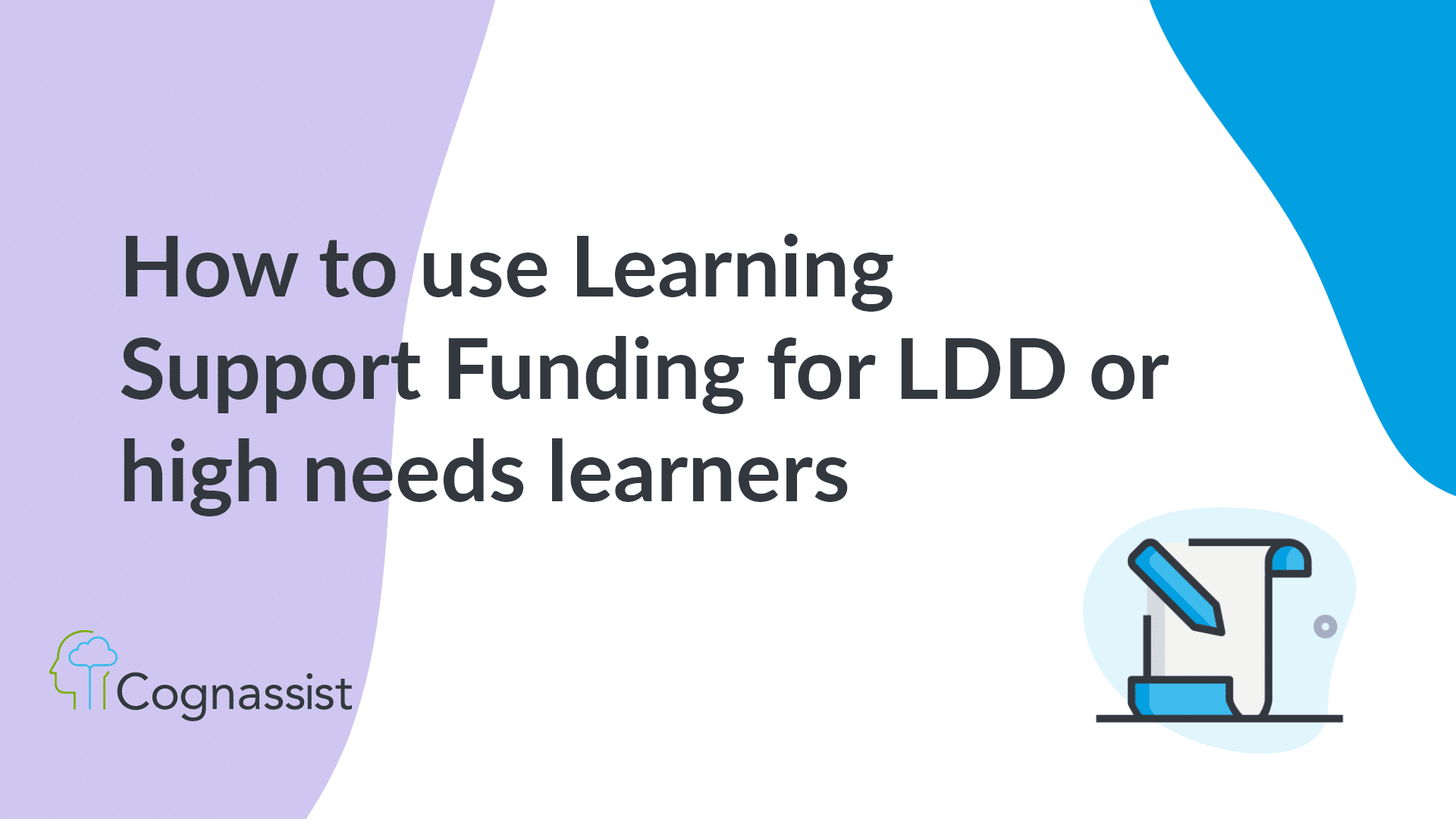
How to use Learning Support Funding to support LDD or high needs learners
Learning Support Funding (LSF1) exists to enable providers to put reasonable adjustments in place and to cover the cost of other ongoing support that is vital to an apprentice’s success.
In the FE and Skills Inspection handbook, Ofsted highlights the importance of a strong starting point and supporting SEND learners. The support that learners receive can be the difference between completion and non-completion.
And ultimately, learning support helps to create more equal opportunities in education and improve potential life outcomes as learners progress in education and the workplace.
So how do you use Learning Support Funding to support your learners?
When and how does each learner receive learning support funding?
The Education and Skills Funding Agency (ESFA) provides a flat monthly rate between the ‘from’ and ‘to’ dates specified on the individualised learner record (ILR).
Providers must conduct an initial assessment of learning support to identify learning difficulties and disabilities, as stated in the Department for Education (DfE) Apprenticeship funding rules:
“As part of the initial assessment (which is an eligible cost), the provider must undertake a screening exercise for learning support.
“Where this assessment identifies potential learning difficulties and / or disabilities, and before a claim for learning support funding (to cover the cost of reasonable adjustments) can be made, the provider may need to undertake a further detailed assessment to identify whether an apprentice has a learning difficulty or disability that directly impacts their ability to complete the apprenticeship on which they are enrolled.” (DfE, 2023)
The payment is made directly to the provider and does not come from the levy-paying Employer’s Apprenticeship Levy Account, where applicable.
The DfE, like all Government bodies, wants to ensure that the support is providing value for money. The monthly rate is expected to be enough to cover the provider’s costs of putting in place reasonable adjustments. And it usually is. You can refer to the funding guidelines to see how much funding an eligible learner will receive each month.
However, if the cost of providing support to a learner does go above the overall amount of the monthly rates and you have evidence of the excess, you can claim for this excess through the Earnings Adjustment Statement (EAS).
For example, you might need to use the EAS to pay for one-off payments like reasonable adjustments at end-point assessment. But in most cases, the monthly rates should cover the additional time with learners, equipment or resources which might be required as reasonable adjustments.
The learner must be receiving learning support on the last day of the month to receive LSF1 for that month. For example, if you enter even one day out from the end of October, the 30 October, as the ‘date applies to’ on the ILR, you will not receive LSF1 for October. So watch out for this.
What does Learning support Funding (LSF1) cover?
Providers are able to use LSF1 to invest in resources that support learners with identified learning difficulties and disabilities and cover the costs of reasonable adjustments, at end-point assessment and throughout the apprenticeship.
Reasonable adjustments, as set out in section 20 of the Equality Act 2010, can take many forms, including:
- Extra time with tutors
- Assistive technology – use of voice recognition software or text-to-speech software
- Screen readers
- Extra time during the assessment
There are many more options that all depend on a learner’s identified difficulties and disabilities. Initial assessment, including a comprehensive needs assessment, is essential to enable you to put a personalised plan in place for each learner.
When learners receive support tailored to their specific learning needs, it enables them to effectively participate, progress and make better decisions in their learning.
Learning Support Funding is a way for providers to be able to improve the support they can give to their learners. It can cover the costs of additional resources and reasonable adjustments for the learner, which improves their experience and outcomes.
Read more about reasonable adjustments and download our free handbook in our next article, What are reasonable adjustments?
Cécile
Marketing Executive